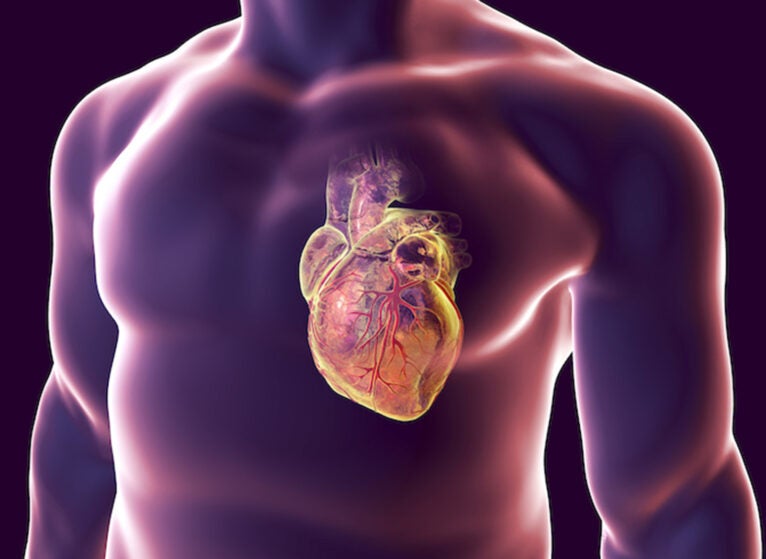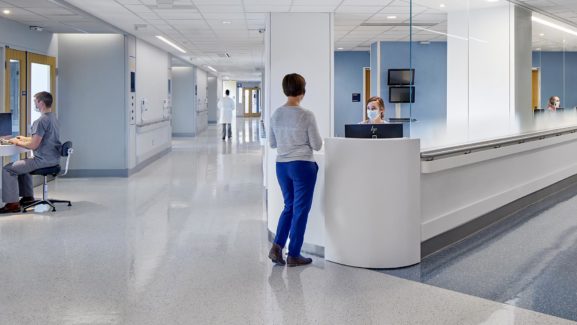

New Technique Improves Diagnosis of Deadly Coronary Artery Disease
An international study led by UVA School of Medicine investigators has found a new technology that allows doctors to quantify blood flow in the heart can improve their ability to diagnose potentially deadly coronary artery disease (CAD).
The technique represents an advance in cardiac magnetic resonance imaging (CMR) used in conjunction with stress testing to diagnose coronary artery disease, a condition which affects 70% or more of people over age 60. CMR stress testing is a noninvasive way for doctors to assess how well the heart is functioning and see if there are dangerous bloodflow blockages.
UVA’s new research suggests combining CMR with bloodflow data offers a superior way to identify patients with CAD. The new technique outperformed human experts examining images, the researchers found.
“These findings are important because it means that a non-invasive test like CMR can be used to help diagnose CAD even at medical centers that may not have highly experienced physicians available to interpret the test,” says researcher Amit Patel, MD, a cardiologist and imaging expert at UVA Health. “By including these novel blood flow measurements into the interpretation of the CMR test, we will be able to more accurately identify patients most likely to benefit from getting an invasive heart catheterization procedure.”
Diagnosing Coronary Artery Disease
Heart disease is the leading cause of death in America, killing hundreds of thousands of people each year, and coronary artery disease is the most common form of heart disease. In most cases of CAD, fatty plaques made of cholesterol and other substances build up in the arteries that deliver blood to the heart. This chokes off blood flow and potentially sets the stage for heart attacks and strokes.
CMR stress testing is a useful way to spot coronary artery disease, but the new research from Patel and colleagues suggests that “quantitative” CMR with bloodflow data is even better. To determine that, they launched a clinical trial at 10 sites around the world, testing quantitative CMR in 127 patients with a mean age of 62.
The researchers wanted to see if quantitative CMR could distinguish between two forms of coronary artery disease: “obstructive” and “nonobstructive.” Obstructive is less common but more likely to require treatment with a coronary artery bypass or heart stent surgery. Nonobstructive CAD is often considered less serious than obstructive because it does usually need to be treated with a surgery, but it can still cause heart attacks and requires treatment with medications.
The researchers found adding data on blood flow significantly improved CMR’s ability to identify obstructive coronary artery disease. Fifty-six patients, or 44% of the study participants, were found to have obstructive CAD, while 71 had nonobstructive. The enhanced CMR proved more effective at detecting obstructive CAD than both traditional CMR and human physicians reading scans.
“These findings will hopefully help us minimize the number of patients who have to undergo an invasive heart catheterization procedure,” Patel says. “Although this study focused on improving the diagnosis of obstructive coronary artery disease, future studies will be needed to determine how the bloodflow measurements will be beneficial for patients with other heart conditions such as heart failure.”
Findings Published
The researchers have published their findings in the Journal of the American College of Cardiology: Cardiovascular Imaging. The research team consisted of Shuo Wang, Paul Kim, Haonan Wang, Ming-Yen Ng, Andrew E. Arai, Amita Singh, Saima Mushtaq, Tsun Hei Sin, Yuko Tada, Elizabeth Hillier, Ruyun Jin, Christian Østergaard Mariager, Michael Salerno, Gianluca Pontone, Javier Urmeneta Ulloa, Ibrahim M. Saeed, Hena Patel, Victor Goh, Simon Madsen, Won Yong Kim, Mayil Singram Krishnam, Vicente Martínez de Vega, Alicia M. Maceira, Jose V. Monmeneu, Aju P. Pazhenkottil, Alborz Amir-Khalili, Mitchel Benovoy, Silke Friedrich, Martin A. Janich, Matthias G. Friedrich and Amit Patel.
Amit Patel has received research funding from GE HealthCare and has received research support from Circle Cardiovascular Imaging, NeoSOFT and Siemens Healthineers. A full list of the authors’ disclosures and funding sources is included in the paper.
To keep up with the latest medical research news from UVA, subscribe to the Making of Medicine blog.
Latest News



